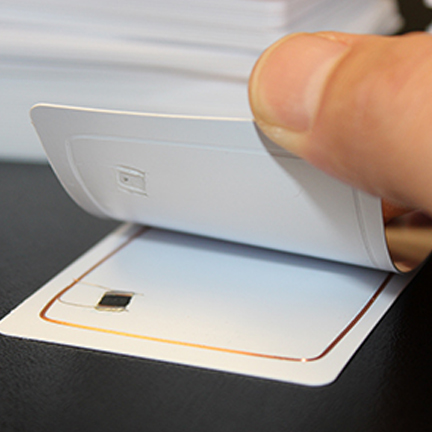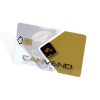The Contact/Contactless Advantage
 Contact and Contactless cards are plastic identification cards containing electronic memory and, in some cases, an embedded integrated circuit (known as chip cards). They are also sometimes called “smart ID cards” or “RFID cards” depending on the type of card and the smart card vendor.
Contact and Contactless cards are plastic identification cards containing electronic memory and, in some cases, an embedded integrated circuit (known as chip cards). They are also sometimes called “smart ID cards” or “RFID cards” depending on the type of card and the smart card vendor.
Security conscious industries (like the medical profession) utilize smart cards to enhance patient privacy and prevent fraud. Smart cards are also able to provide strong security authentication for single sign-on (SSO) in large organizations, as well as identification, authentication, application processing and data storage. Through the use of smart cards, governments and regional authorities are able to reduce budgets tied to expensive processing, and security costs associated with standard license and identification cards.
Contactless Cards
Contactless cards house an integrated circuit chip. They provide not only memory capacity, but computational capability as well. The self-containment of a contactless smart card makes it resistant to attack, as it does not depend upon potentially vulnerable external resources. Because of this characteristic, contactless smart cards are often used in different applications which require strong security protection and authentication. For added security, a contactless smart card can be paired with a mobile phone to restrict contactless transactions when the mobile device is not within range, preventing use of the card if stolen.
RFID Card
Radio frequency identification (RFID) is a generic term that is used to describe a system that transmits the identity (in the form of a unique serial number) of an object or person wirelessly, using radio waves. An RFID system consists of an antenna and a transceiver, which read the radio frequency and transfer the information to a processing device, as well as a transponder (or tag), which is an integrated circuit on the plastic smart card containing the radio frequency circuitry and information to be transmitted. A subtype of RFID is NFC, which stands for near field communication, enabling two devices to communicate within a very short range. NFC cards add a layer of security to information transactions.
Applications
Smart card applications include: financial, identification, SIM card, public transit, computer security, school operations, healthcare and more.
Plastic Smart ID Cards Available:
Contact
|
Contactless – RFID
|
System Frequency Ranges:
| Frequency | Range |
|---|---|
| Low Frequency 125 – 148 KHz |
3 Feet |
| High Frequency 13.56 MHz |
3 Feet |
| Ultra-High Frequency 915 MHz |
25 Feet |
| Microwave 2.45 GHz |
100 Feet |
MIFARE, MIFARE Ultralight, MIFARE DESFire, MIFARE Mini, and MIFARE Classic are trademarks of NXP B.V.










